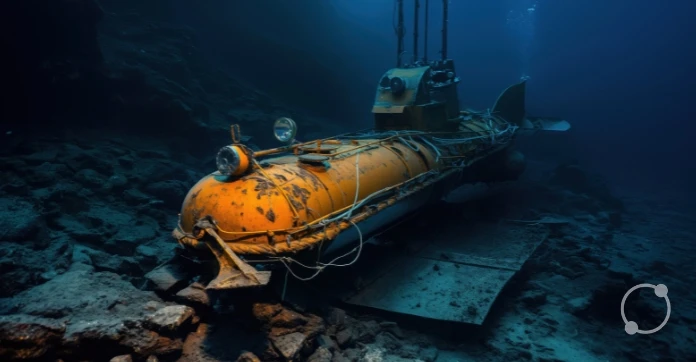US Officials Conclude Titan Submersible Imploded Due to Poor Engineering

Key Points:
- Official reports from US agencies, including the NTSB and Coast Guard, firmly state the catastrophic implosion of the Titan submersible was primarily due to inadequate engineering, testing, and design flaws.
- The submersible’s unique carbon fiber and titanium hull, a departure from traditional industry standards, failed to meet necessary strength and durability requirements for deep-sea operations.
- The tragedy highlights a critical lack of specific, compulsory international regulatory oversight for deep-sea tourism submersibles, enabling a self-regulated and flawed design to operate.
The tragic loss of the OceanGate Titan submersible and its five occupants in June 2023 has prompted an intense, multinational investigation. Formal reports from US agencies, including the National Transportation Safety Board (NTSB) and the US Coast Guard’s Marine Board of Investigation (MBI), have definitively concluded that systemic engineering failures were the primary cause of the catastrophic implosion.
These findings shift the focus from a simple operational accident to a profound failure in design and material science. The incident has sent shockwaves through the nascent deep-sea tourism industry, raising critical questions about risk assessment and technological boundaries.
Questionable Design and Material Choices
At the heart of the official concerns lies the Titan’s unconventional hull. Unlike most deep-diving submersibles, which use a robust, uniform sphere of materials like steel or pure titanium, the Titan submersible employed a novel design: a large cylindrical section made of carbon fiber integrated with titanium end caps.
The NTSB report specifically noted that OceanGate’s engineering process was “inadequate” and resulted in a pressure vessel that “contained multiple anomalies and failed to meet necessary strength and durability requirements,” as reported by Associated Press.
This combination of materials introduced complex engineering challenges, particularly regarding how the different materials would respond to the immense, cyclical pressure of repeated deep dives, leading to structural integrity loss
Warnings Unheeded and Testing Gaps
Investigators determined that the implosion was a “preventable tragedy.” The US Coast Guard’s MBI report cited OceanGate’s failure to follow established engineering protocols for safety, testing, and maintenance as the primary causal factor.
The company’s over-reliance on a real-time monitoring system, without conducting a meaningful analysis of the data, meant they were unaware that the hull was damaged and needed to be removed from service after previous dives. Furthermore, internal warnings from employees about the vessel’s safety were reportedly ignored.
This culture of downplaying and ignoring safety information, described as “critically flawed” in a US Coast Guard report released in August 2025, highlights the catastrophic consequences of dismissing established submersible safety principles.
A Regulatory Vacuum
The investigation is further complicated by the fact that the Titan was not classified by major international maritime certification bodies. The MBI highlighted that OceanGate “strategically creating and exploiting regulatory confusion” to operate the Titan completely outside of established deep-sea protocols.
The vessel’s operation in international waters, bypassing certification, meant its structural integrity was largely self-regulated. US agencies have made it clear that this regulatory void allowed a potentially flawed design to operate in one of the most hostile environments on Earth. The disaster is now a grim case study on the dangers inherent in prioritizing speed of innovation over established submersible safety protocols.
Call for New Standards
The MBI and NTSB reports have already catalyzed a global discussion on the need for stricter, internationally recognized standards for deep-sea vessels. The NTSB recommended the Coast Guard commission a panel of experts to study submersibles and implement new regulations for vehicles of novel design.
The MBI’s report contained 17 safety recommendations aimed at strengthening oversight and closing gaps in international maritime policy, as reported by the US Coast Guard. This intense scrutiny will likely lead to a new era of enhanced submersible safety regulations worldwide.



